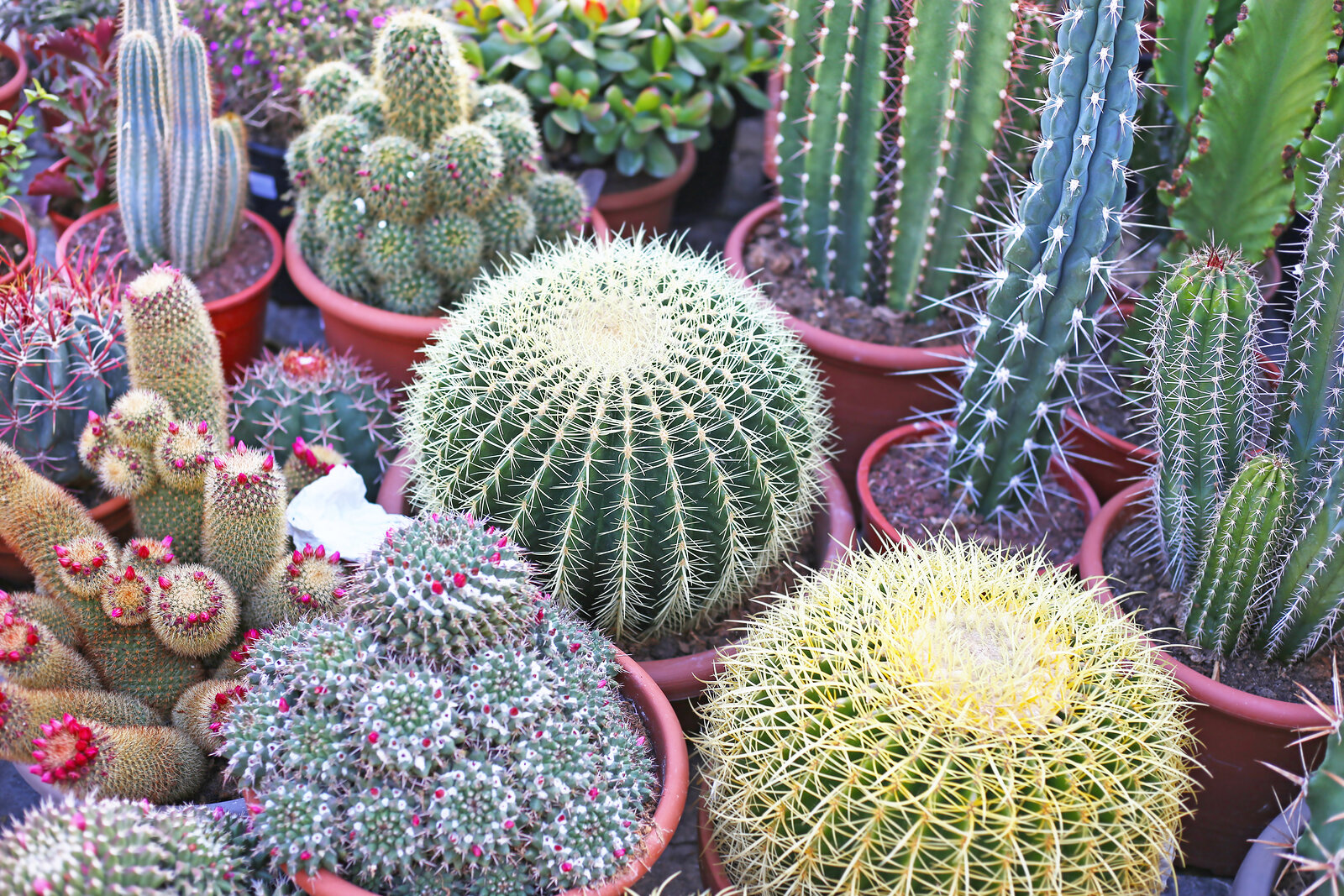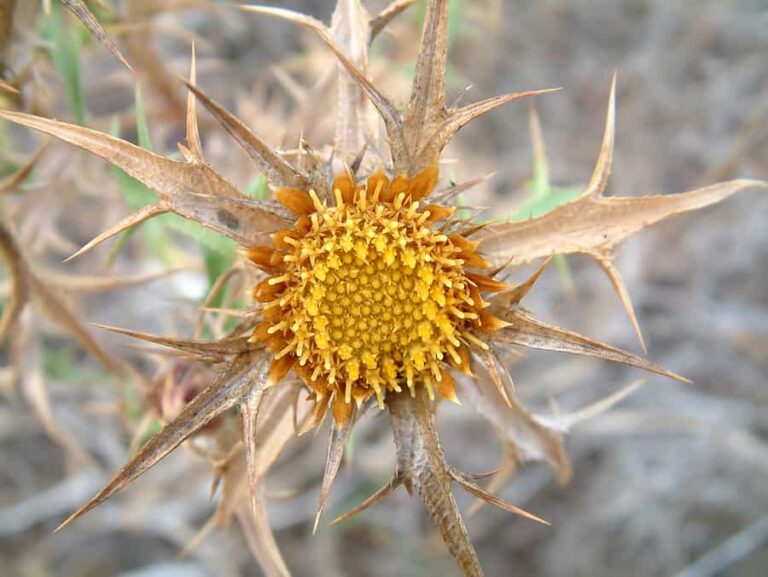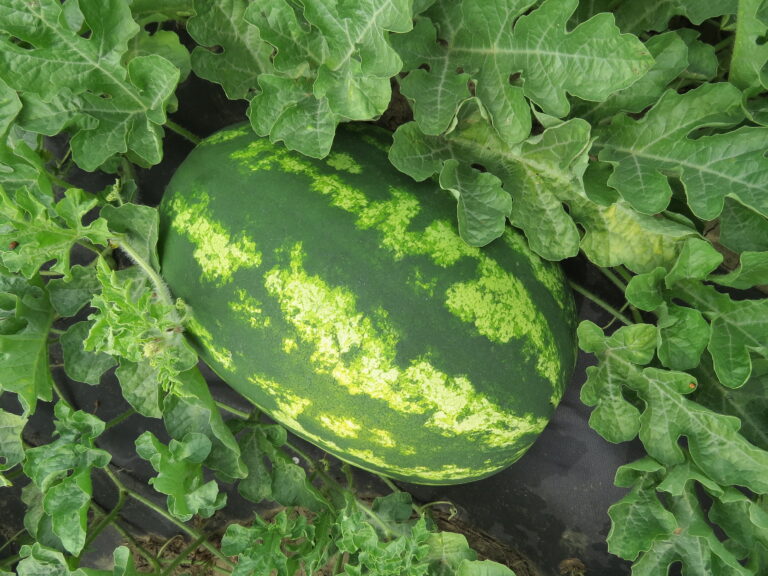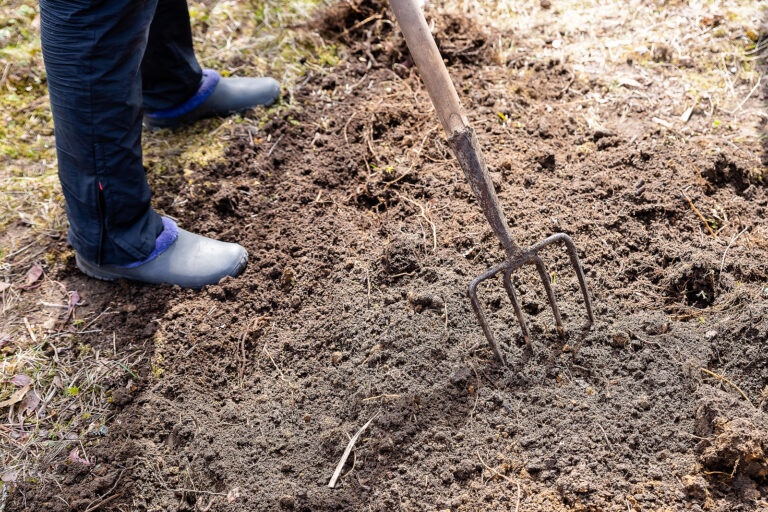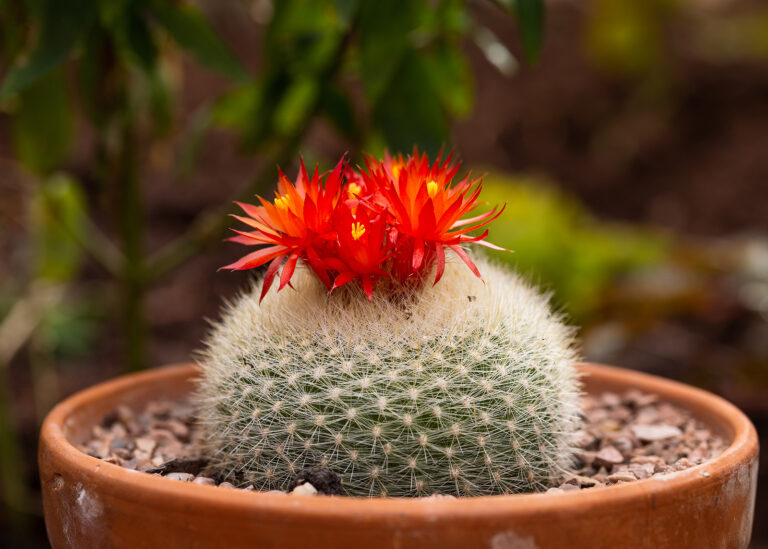How to Grow Cacti
Cacti include a wide variety of plants most have waxy and often spined foliage. Cacti are arid climate plants that can be grown indoors in bright light. Most are low maintenance needing little water and only occasional feeding.
Cacti vary in shape from huge columnar branched or unbranched forms to slender vines, from tree-like growths to small, flat, and rounded forms of the Mammillaria. Leaves, except in rare cases, are conspicuous by their absence. When leaves are present they are small and inconspicuous and soon fall.
Cactus roots vary greatly; in some cases they are fibrous, but some are tuberous, some are aerial, and sometimes there is a tap-root.
The blossoms are usually large and showy with many petals and numerous stamens.
Cacti are native to the Western hemisphere. Their habitat extends into Canada and throughout the United States, especially the Southwest. Mexico is undoubtedly entitled to be called “Cactus Land,” leading all other localities in the number and variety of kinds. Cacti are also distributed over many parts of South America.
There are more than 1500 species and several subdivisions of cacti. Subdivisions are divided into tribes. Subtribes often grown in small gardens or indoors include Opuntias, Echinocerei, Echinopses, Neomammillaries, and Coryphanthas; there are species within these subtribes,
All cacti are succulent; succulent means capable of storing within itself sufficient moisture to enable it to withstand drought or arid conditions. Cacti can be greedy in their uptake of water, so much so that they must have good drainage. Under no circumstances will they tolerate soggy soil; some may be ruined in a single day by water standing at its roots.
Get to know Cacti
- Plant type: Subtropical evergreen perennials
- Growing Zones and range: 10-11 for most cacti
- Hardiness:
- Temperature: Low winter temperatures of 65°F (18°C) days, 40°F (4.5°C) night
- Light: High light with direct sun
- Height and width: Wide variety of shapes and sizes
- Foliage: No leaves but thickened, water-storing, spiny stems
- Flowering: Most cacti bloom once a year usually in spring; a cool period is usually needed to trigger blooms
- Uses: Container plants indoors and outdoors; use as specimen plants in warm-region gardens.
- Botanical name: Various genera
- Common name: Cacti
Where to plant Cacti
- Cacti want bright light, direct sun.
- Plant cacti in a special, fast-draining cactus mix. Oudoors, grow cacti in well-drained, sandy, or gritty soil. Improve soil drainage with gravel or sand.
- Grow where water will drain from the roots; overwatering will kill cacti.
- Best in terra-cotta pot with a rounded edge.
When to plant Cacti
- Set cacti outdoors for summer. Provide a cool, dry winter rest period.
Planting and spacing Cacti
- Space cacti according to size at maturity.
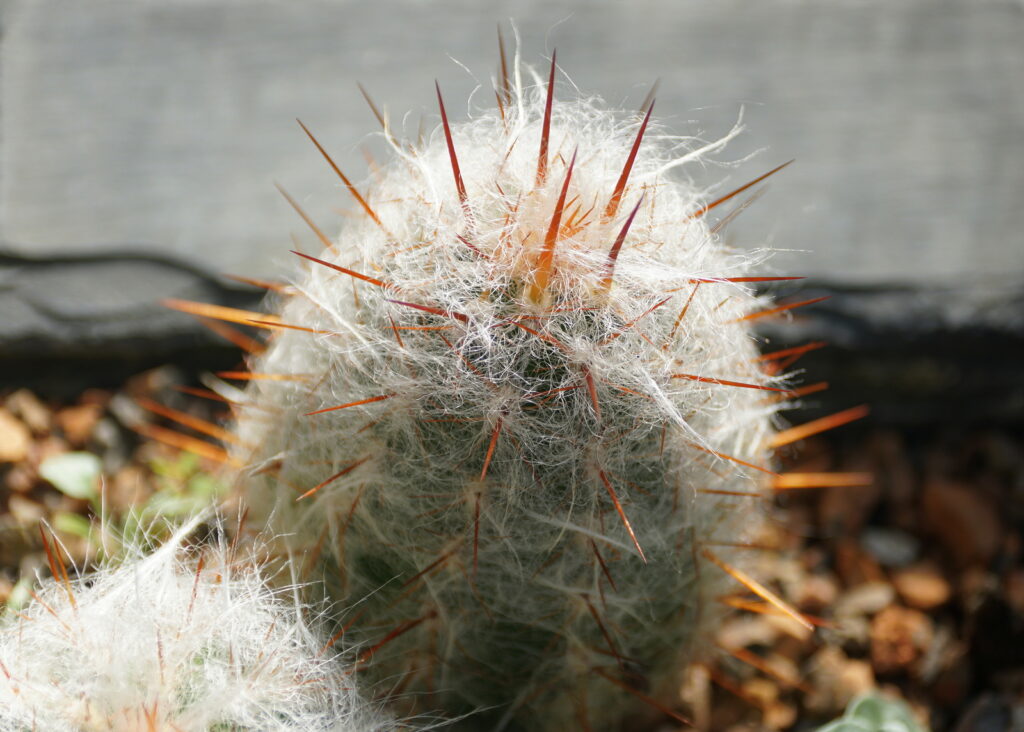
How to water and feed Cacti
- Water cacti thoroughly then wait until the soil surface feels dry before watering again. Give almost no water in winter.
- Fertilize cacti once a year in early spring. Fertilize with a 10-10-10 liquid fertilizer.
Cacti care
- Cacti that do not get a winter rest may produce weak, spindly growth.
- Any cactus can be grafted to another by placing the cut bottom of one atop a cut tip of another; tie them together firmly.
- When repotting, use a mix for cactus and succulents.
- High humidity can cause problems such as leaf scarring and rotting. Add grit or gravel around the base of outdoor cacti to keep the crown of the plant dry.
Cacti propagation
- Many cacti produce new plants around the base of the plant; these can be repotted.
10 tips for growing Cacti indoors
Growing cacti indoors can be a rewarding experience, as these resilient plants add unique aesthetics and are relatively low-maintenance. Here are some of the best tips to ensure your indoor cacti thrive:
1. Provide plenty of light
- Cacti need bright, indirect sunlight. Place them near a south-facing window or a location that receives 4-6 hours of sunlight per day.
- If natural light is limited, consider using a grow light to supplement.
2. Use well-draining soil
- Cacti require well-draining soil to prevent root rot. Use a specialized cactus or succulent potting mix, or make your own by mixing regular potting soil with sand, perlite, or pumice for better drainage.
3. Choose the right pot
- Use a pot with drainage holes to allow excess water to escape. Terra cotta pots work well as they allow the soil to dry out more quickly, reducing the risk of overwatering.
4. Water sparingly
- Water cacti only when the soil is completely dry. This typically means every 2-4 weeks, depending on the season and indoor humidity levels.
- In the winter, reduce watering even more, as most cacti enter a dormant period.
5. Monitor humidity levels
- Cacti prefer a dry environment. Ensure humidity levels are low, especially during colder months, by placing them away from humid rooms like kitchens or bathrooms.
6. Rotate regularly
- Rotate the pot occasionally so all sides of the cactus receive even light. This prevents uneven growth or leaning toward the light source.
7. Fertilize sparingly
- During the growing season (spring and summer), feed your cacti with a diluted, balanced fertilizer (such as a 10-10-10 formula) or a cactus-specific fertilizer every 4-6 weeks.
- Stop feeding during the fall and winter when the plant is dormant.
8. Avoid cold drafts
- Cacti are sensitive to extreme cold and drafts. Keep them away from windowsills where temperatures may drop too low, especially during the winter months.
9. Repot when necessary
- Repot your cactus every 2-3 years to refresh the soil and provide more room for root growth. Be sure to use gloves or tongs to handle spiky varieties carefully.
10. Watch for pests
- Indoors, cacti can occasionally suffer from pests like mealybugs or spider mites. Inspect your plants regularly, and treat infestations with insecticidal soap or neem oil if necessary.
By following these guidelines, your indoor cacti should thrive and add a touch of the desert to your living space!
Cacti varieties to grow
- Barrel cacti (Echinocactus spp.) are spiny, clumping, and barrel-shaped with showy, bell-shaped flowers that are often yellow. Barrel cacti can be grown from seed.
- Chin cactus (Gymnocalycium mihanovichii) is globe-shaped with prominent ribs and long-lasting blooms. Yellow or red forms of this cactus are sometimes grafted atop a green stem.
- Cob cactus (Lobivia leucomalla) has large flowers on 1-inch plants.
- Mammillarias (Mammillaria spp.) include many easy-to-grow species; clustering cacti with showy hairs or spines; they commonly have a ring of small flowers around the top.
- Old man cactus (Cephalocereus senilis) hunched form covered with white “hair’; blooms at night with rose-pink flowers.
- Peanut cactus (Chamaecereus silvestri) forms 6-inch long clusters of green branches with soft, white spines and orange-red flowers.
- Prickly pear cacti (Opuntia spp.) flat pads covered with spines with glossy flowers.
- Rabbit ears (Opuntia microdasys) grow to 12 inches; green pads dotted with small clusters of tiny, spine-like glochids.
- Rattail cactus (Aporocactus flafelliformis) has 3-foot long stems and bright red blooms, for hanging baskets.
Related articles:

